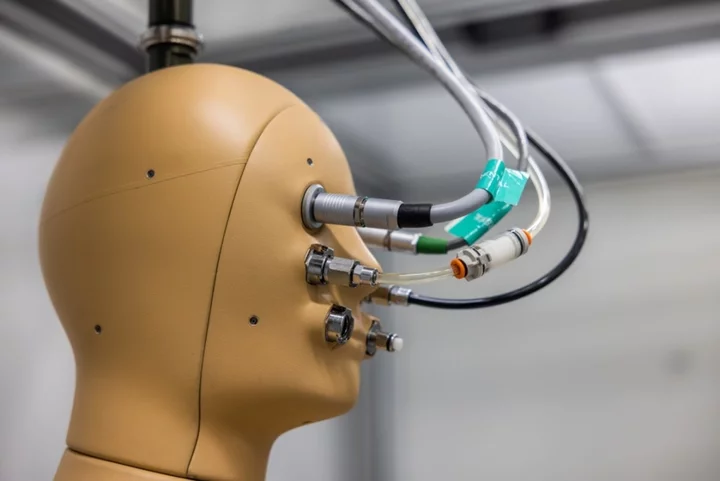Scientists invent first ever ‘breathing, sweating, shivering’ robot
Views: 4665
2023-06-08 01:46
Scientists say they have built the first ever “breathing, sweating, shivering” robot, designed to cope and adapt to different temperatures. The heat-sensitive “thermal mannequin”, dubbed ANDI, features 35 individually controlled surfaces with pores that bead sweat like humans. Designed by US firm Thermetrics for use by researchers at Arizona State University, the robot was created to help better understand the health impacts of extreme temperatures on the human body. “ANDI sweats, he generates heat, shivers, walks and breathes,” said Konrad Rykaczewski, principal investigator for the ASU research project, whose work aims to identify and measure the effects of extreme heat on humans. “There’s a lot of great work out there for extreme heat, but there’s also a lot missing. We’re trying to develop a very good understanding of how heat impacts the human body so we can quantitatively design things to address it.” Some of the 10 sweating robots built by the researchers are already being used by clothing companies for garment testing, however ASU’s android is the only one that can be used outdoors. This allows experiments in previously impossible extreme heat environments, as well as studies into the impact of solar radiation. ASU researchers plan to test ANDI in heat-vulnerable areas around Phoenix this summer in an effort to understand how different ages and body types are impacted by high temperatures. “We can move different BMI models, different age characteristics and different medical conditions [into ANDI],” said Ankit Joshi, an ASU research scientist leading the modelling work and the lead operator of ANDI. “A diabetes patient has different thermal regulation from a healthy person. So we can account for all this modification with our customised models.” The results will be used to design interventions, such as cooling clothes and technologies to protect against heat stroke and heat-related deaths. Read More Electric cars could save more than 100,000 lives, study claims Electric cars could save more than 100,000 lives, study claims ‘I saw the future. It left me in tears’ This could be the end of ‘ducking’

Scientists say they have built the first ever “breathing, sweating, shivering” robot, designed to cope and adapt to different temperatures.
The heat-sensitive “thermal mannequin”, dubbed ANDI, features 35 individually controlled surfaces with pores that bead sweat like humans.
Designed by US firm Thermetrics for use by researchers at Arizona State University, the robot was created to help better understand the health impacts of extreme temperatures on the human body.
“ANDI sweats, he generates heat, shivers, walks and breathes,” said Konrad Rykaczewski, principal investigator for the ASU research project, whose work aims to identify and measure the effects of extreme heat on humans.
“There’s a lot of great work out there for extreme heat, but there’s also a lot missing. We’re trying to develop a very good understanding of how heat impacts the human body so we can quantitatively design things to address it.”
Some of the 10 sweating robots built by the researchers are already being used by clothing companies for garment testing, however ASU’s android is the only one that can be used outdoors.
This allows experiments in previously impossible extreme heat environments, as well as studies into the impact of solar radiation.
ASU researchers plan to test ANDI in heat-vulnerable areas around Phoenix this summer in an effort to understand how different ages and body types are impacted by high temperatures.
“We can move different BMI models, different age characteristics and different medical conditions [into ANDI],” said Ankit Joshi, an ASU research scientist leading the modelling work and the lead operator of ANDI.
“A diabetes patient has different thermal regulation from a healthy person. So we can account for all this modification with our customised models.”
The results will be used to design interventions, such as cooling clothes and technologies to protect against heat stroke and heat-related deaths.
Read More
Electric cars could save more than 100,000 lives, study claims
Electric cars could save more than 100,000 lives, study claims
‘I saw the future. It left me in tears’
This could be the end of ‘ducking’









